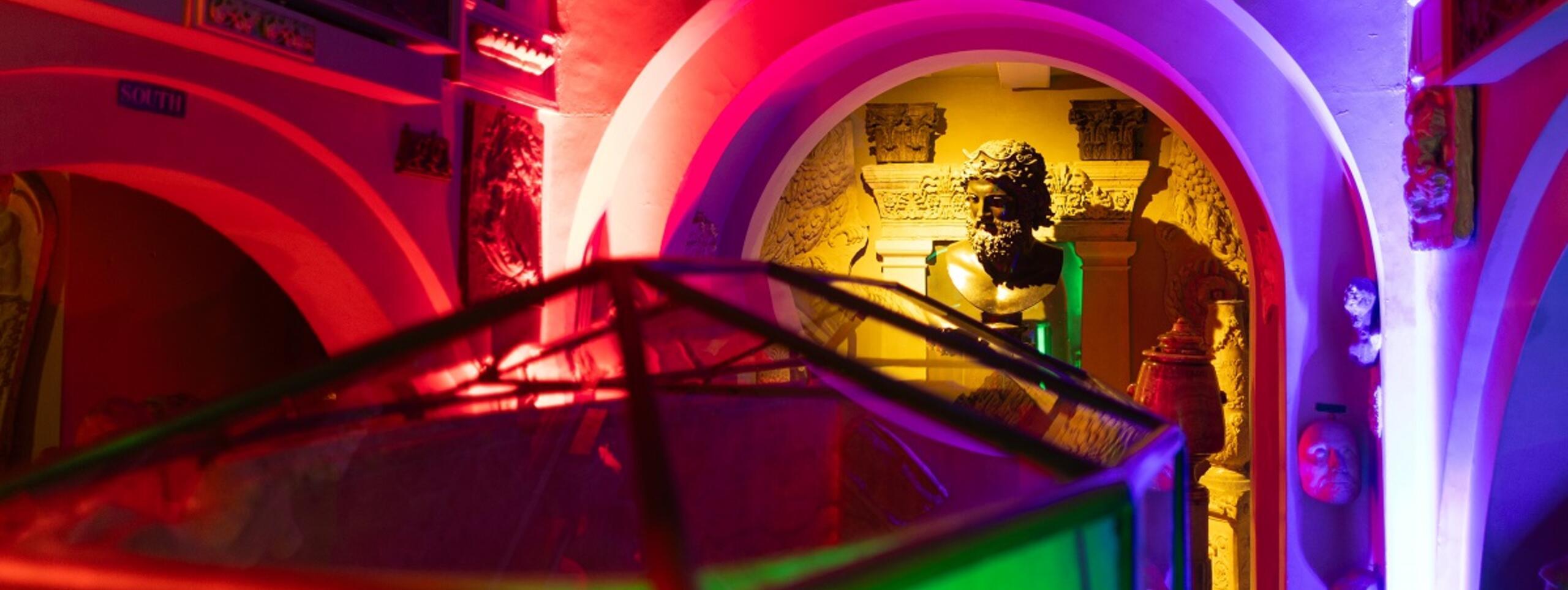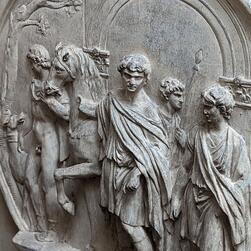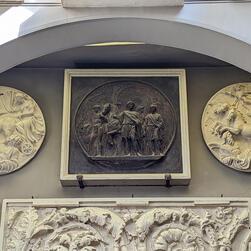Words by Honor Sandiford
Soane’s collection includes many objects which represent figures regarded as prime examples of Classical beauty. One such character was the Roman emperor Hadrian’s (c. 76–138 AD) ‘favourite’, Antinous (c. 111–130 AD), believed to have been Hadrian’s lover and deified after his early death. At the time of Soane’s death in 1837, the Museum contained seven works depicting Antinous. One example includes a plaster cast of a bust of Antinous as Bacchus (on display in the Dome Area). This bust is a cast of the celebrated ‘Lansdowne’ Antinous which was originally on display at Hadrian’s villa, Tivoli, near Rome. The Museum also contains three casts of a roundel from the Arch of Constantine (on display in the Dome Area, Drawing Office and Staircase). The roundel, known as ‘Trajan departing for the chase’, actually depicts Hadrian and his travelling party, including Antinous.












